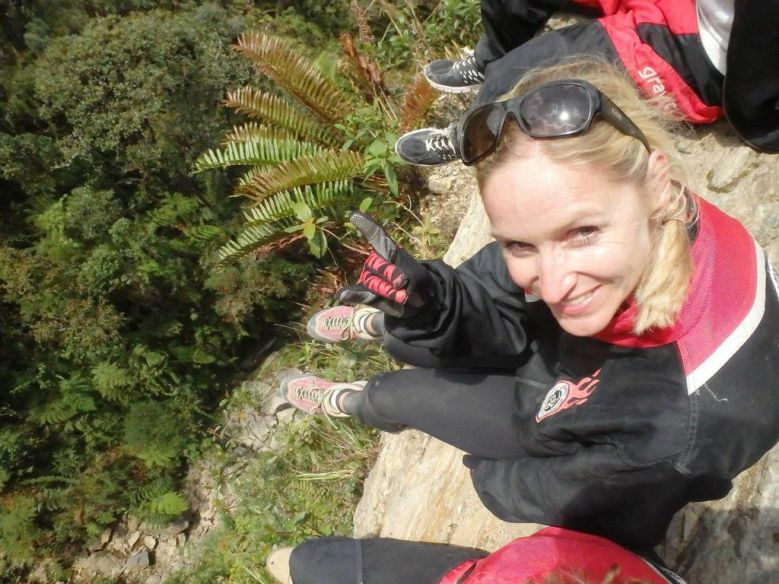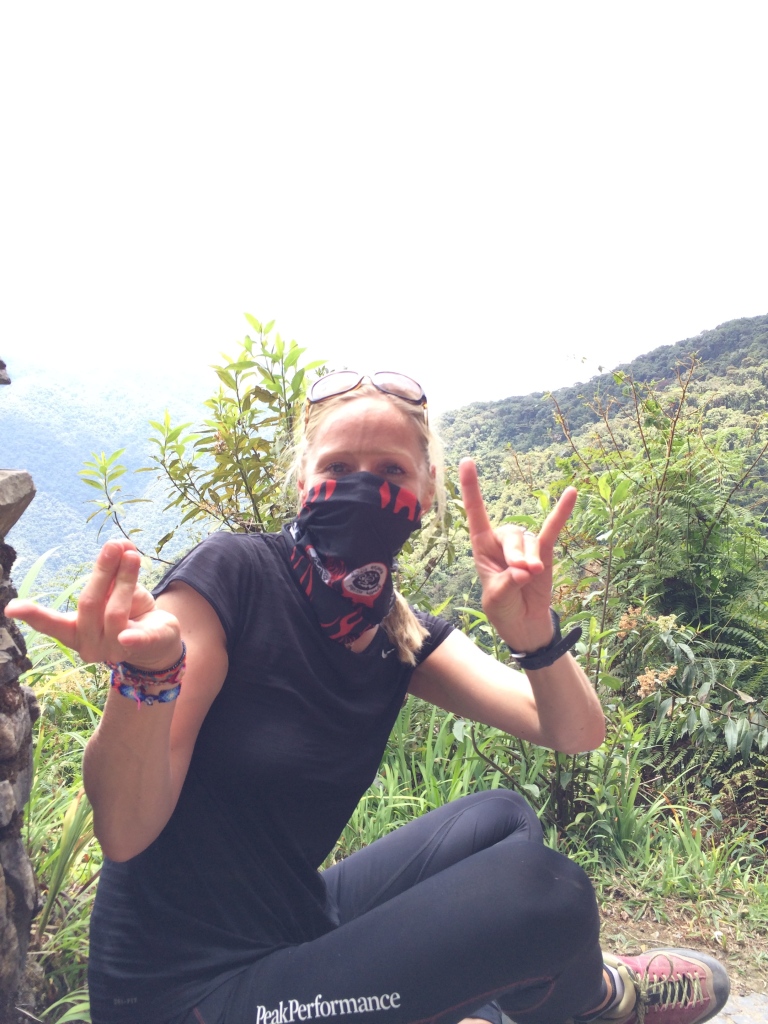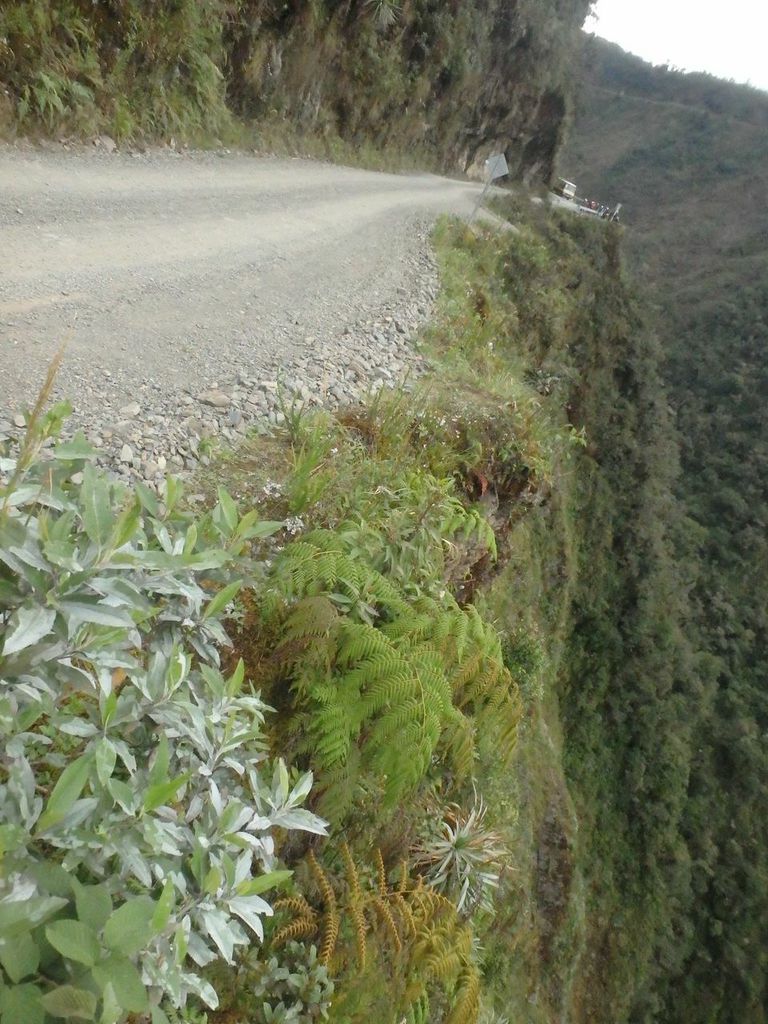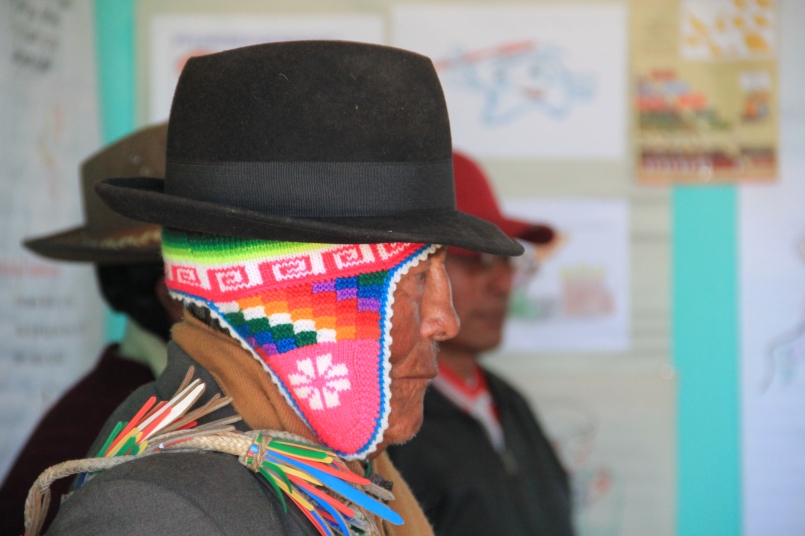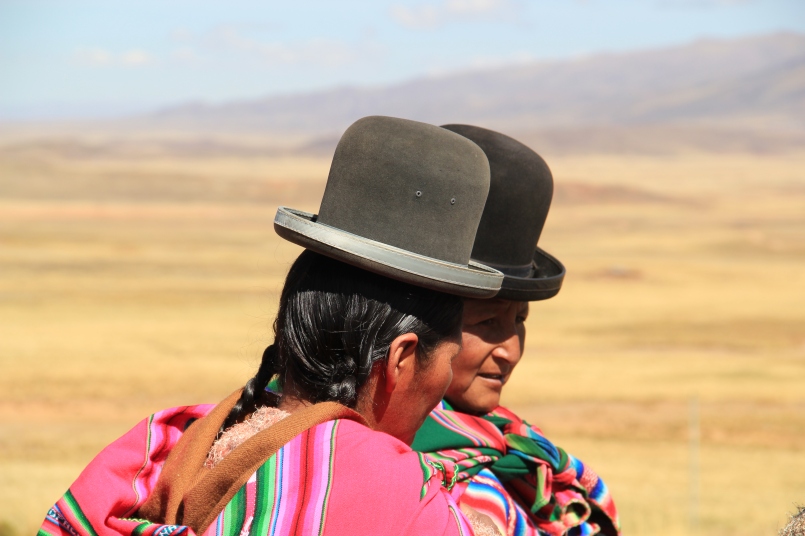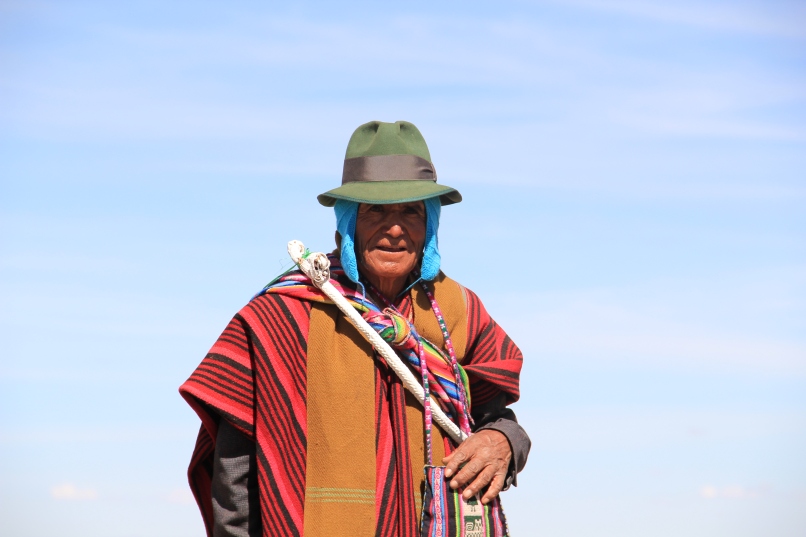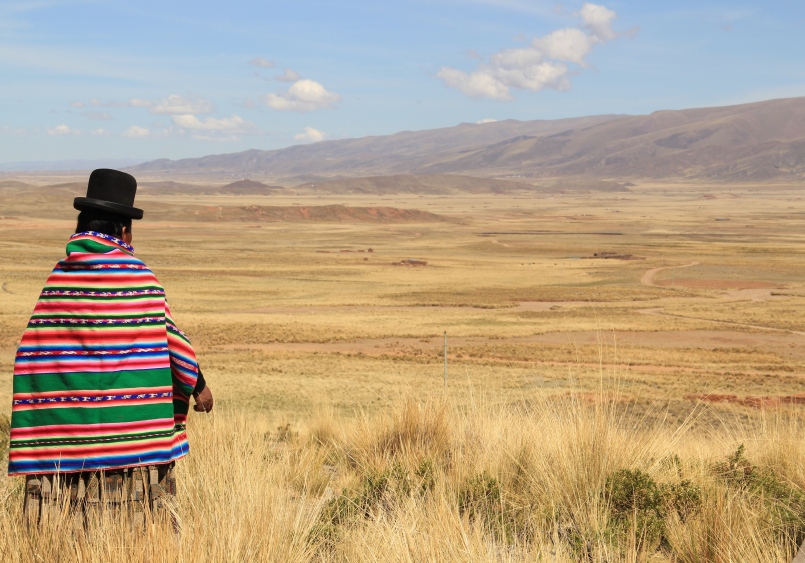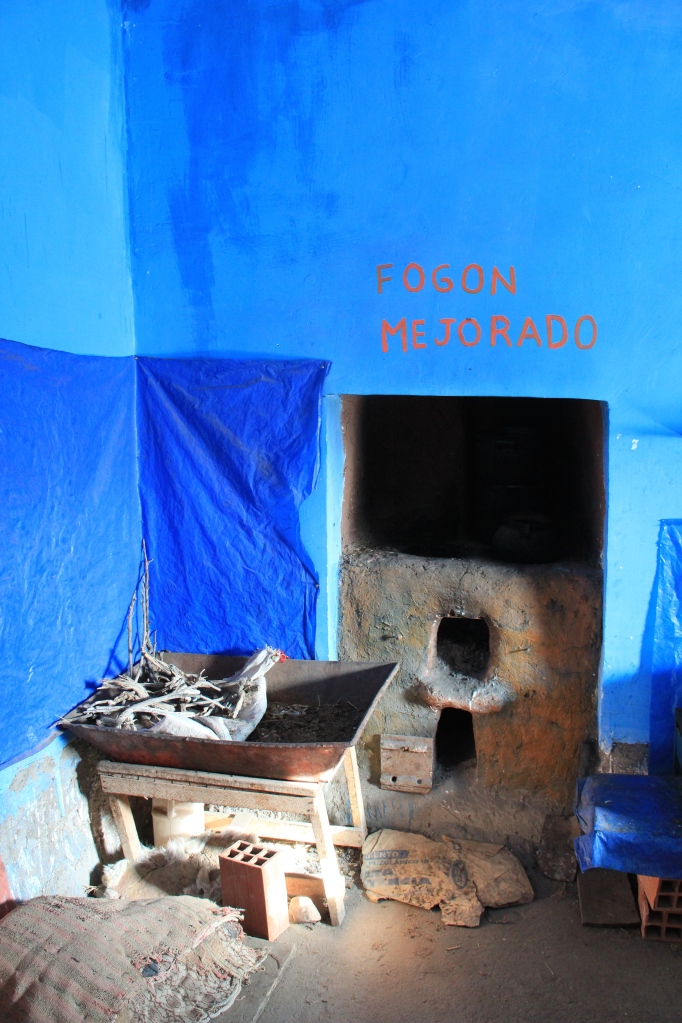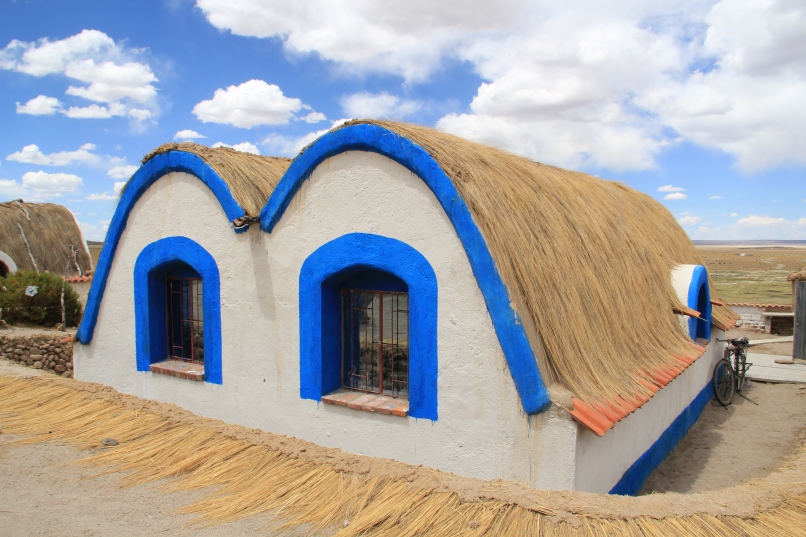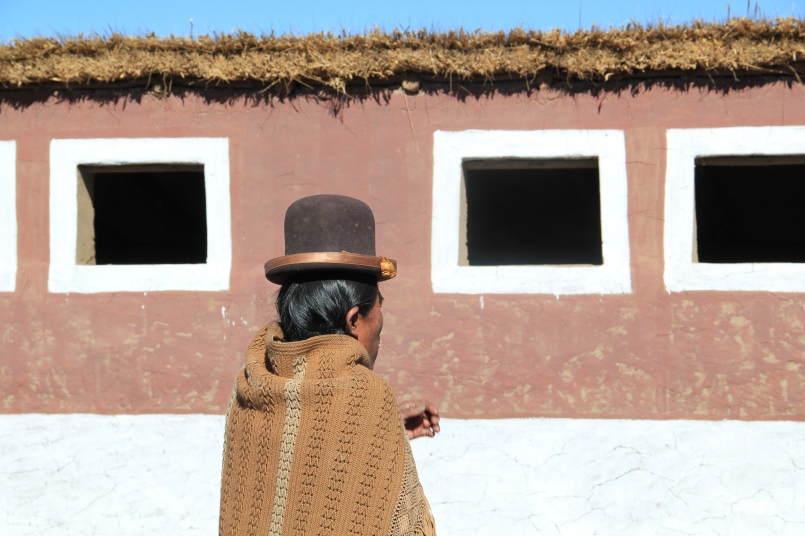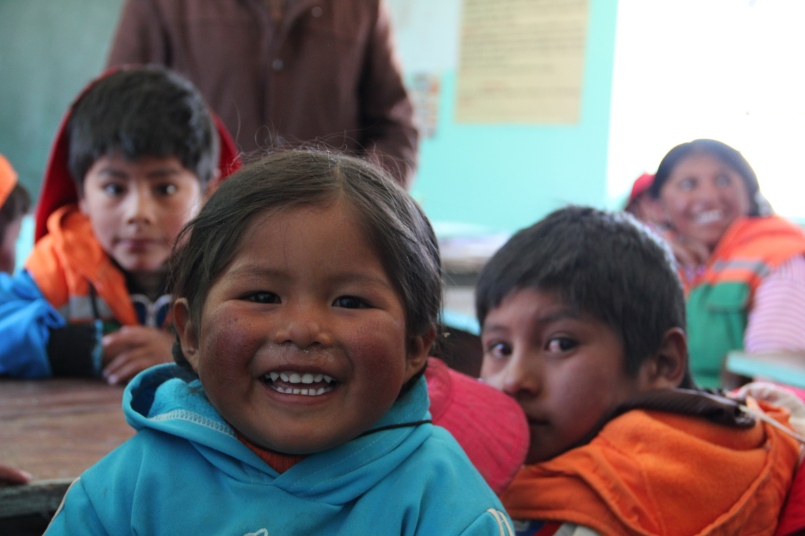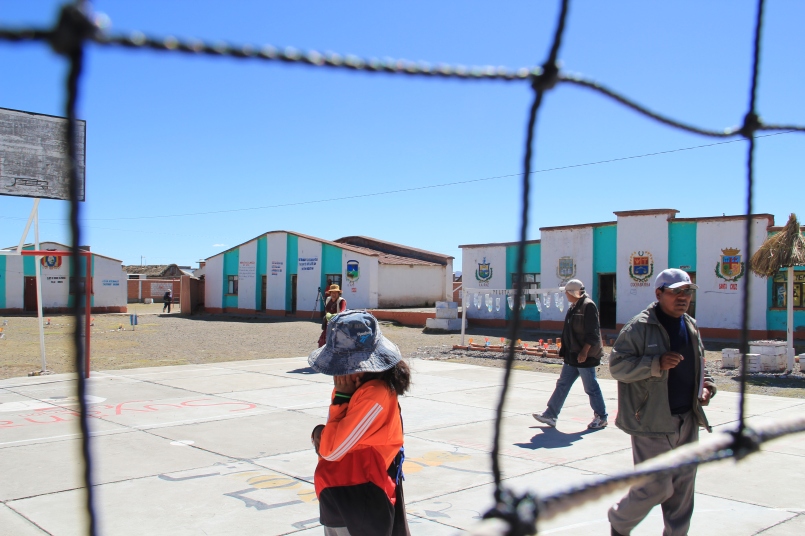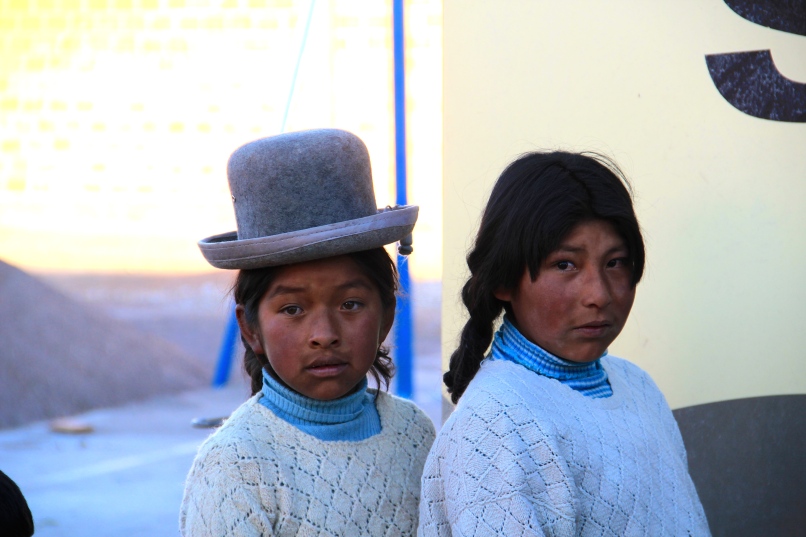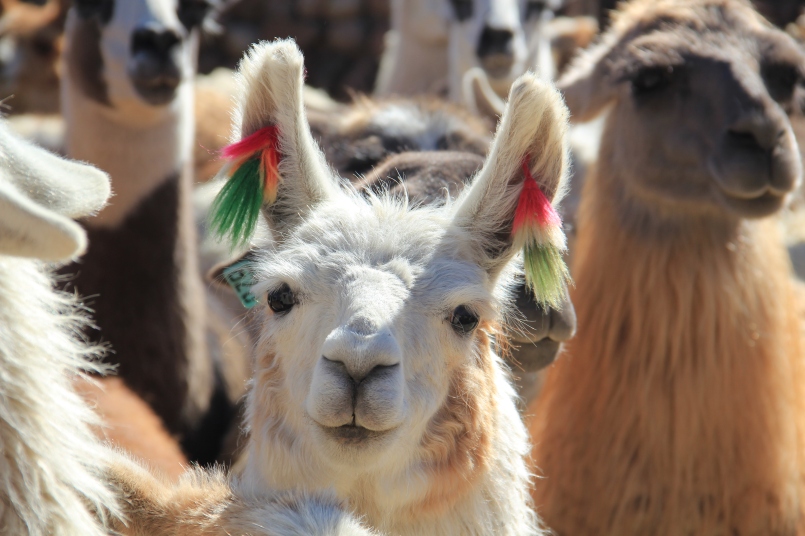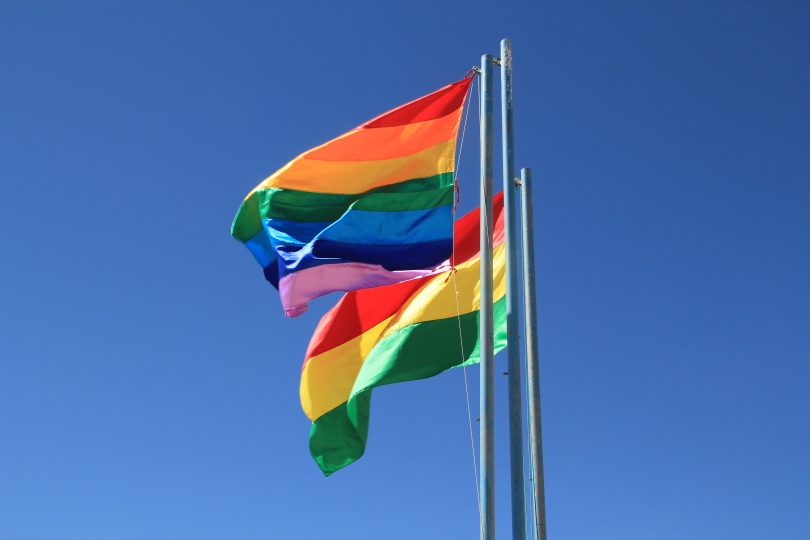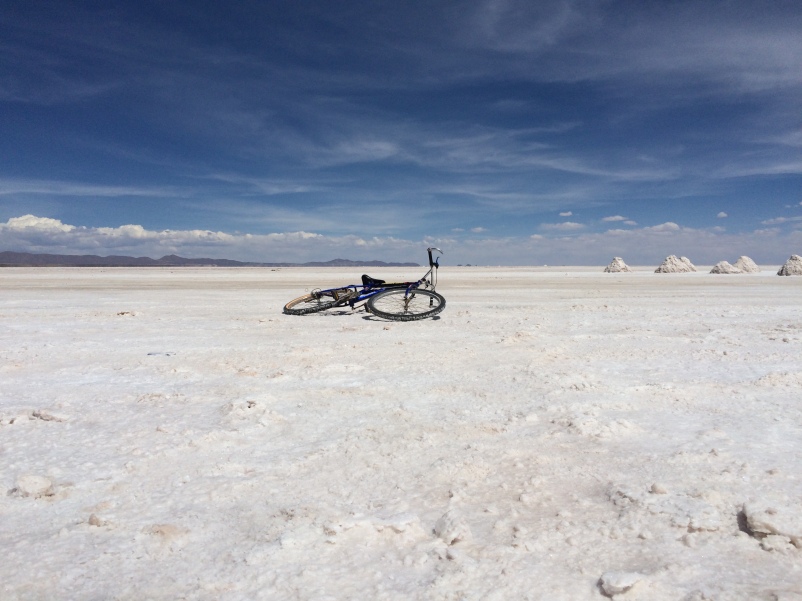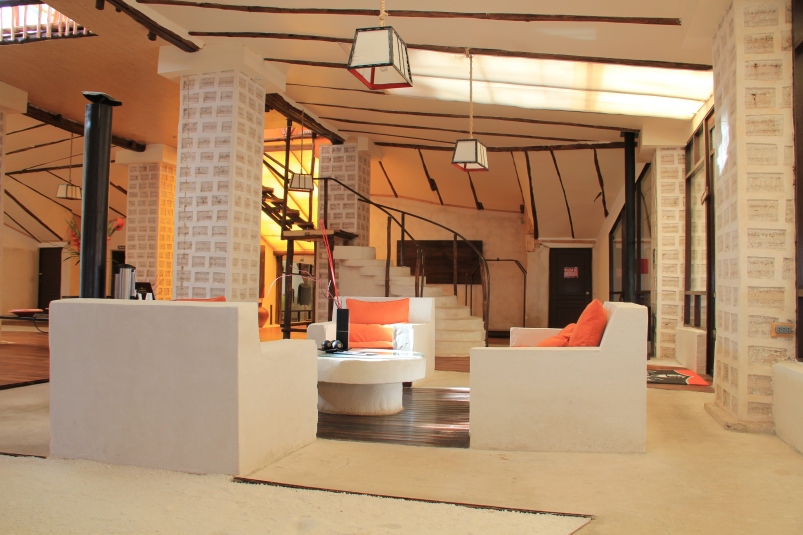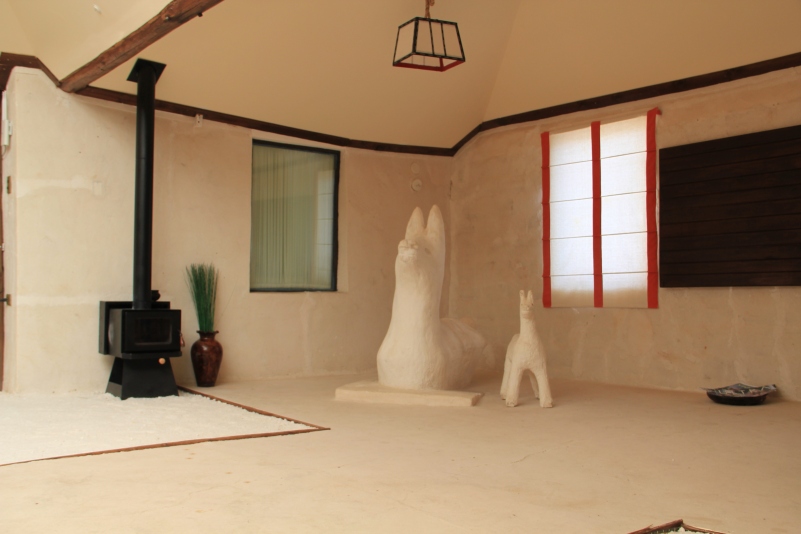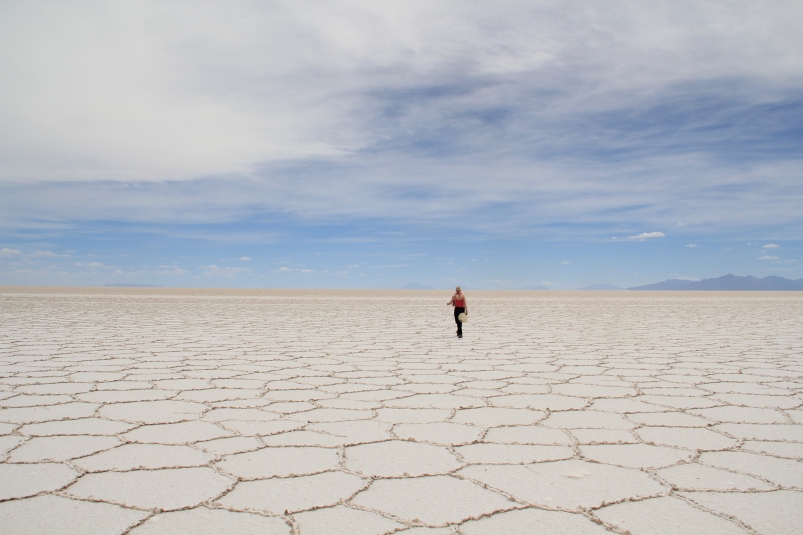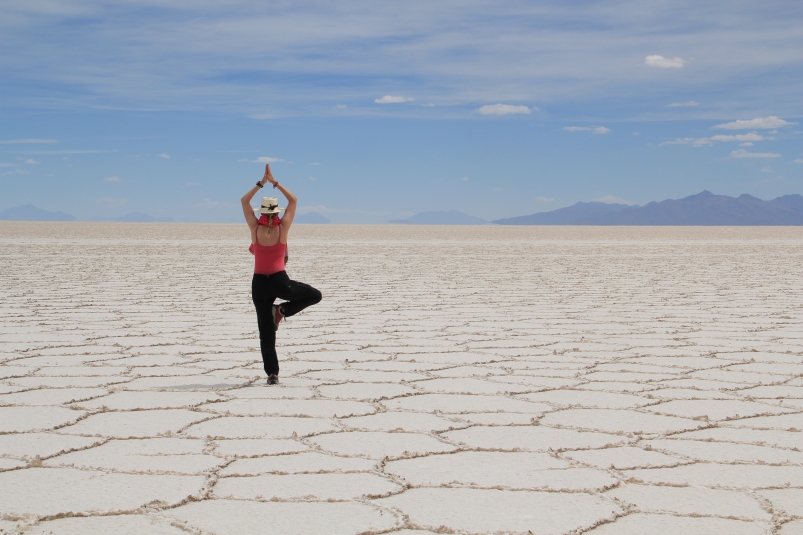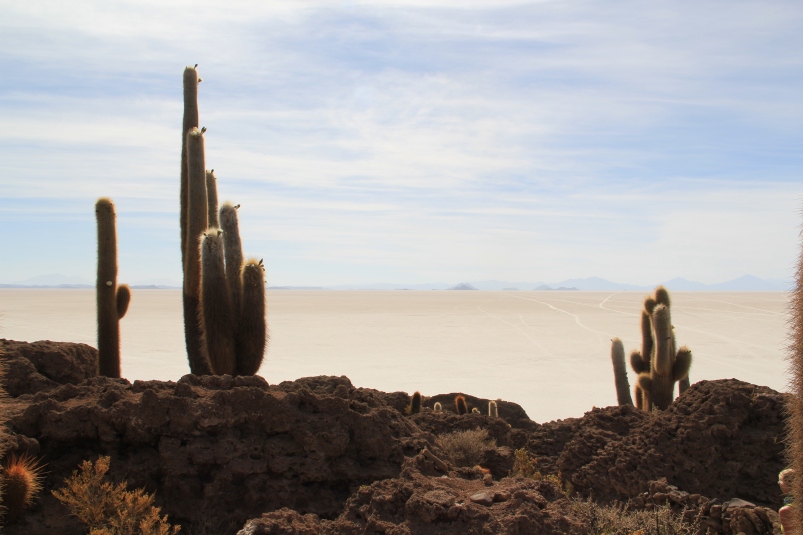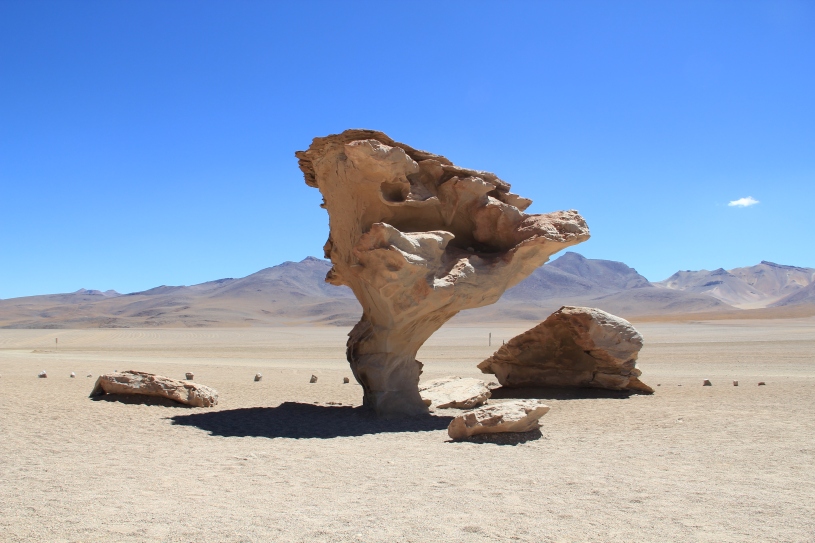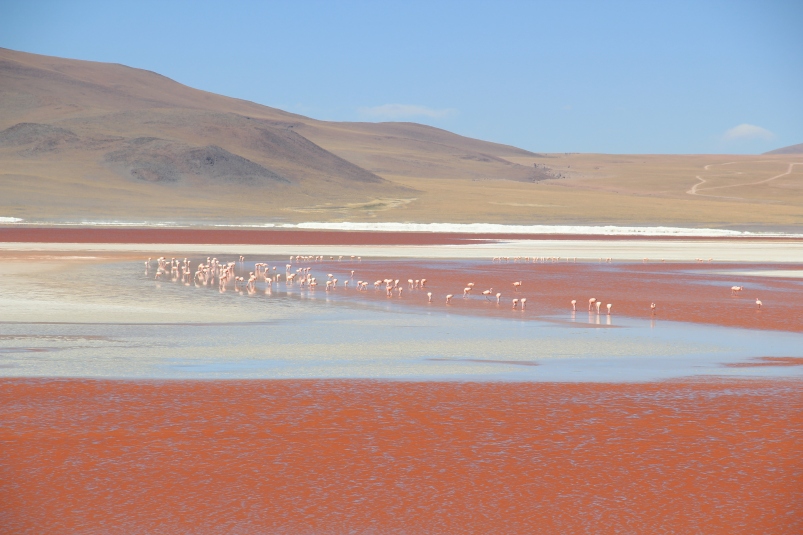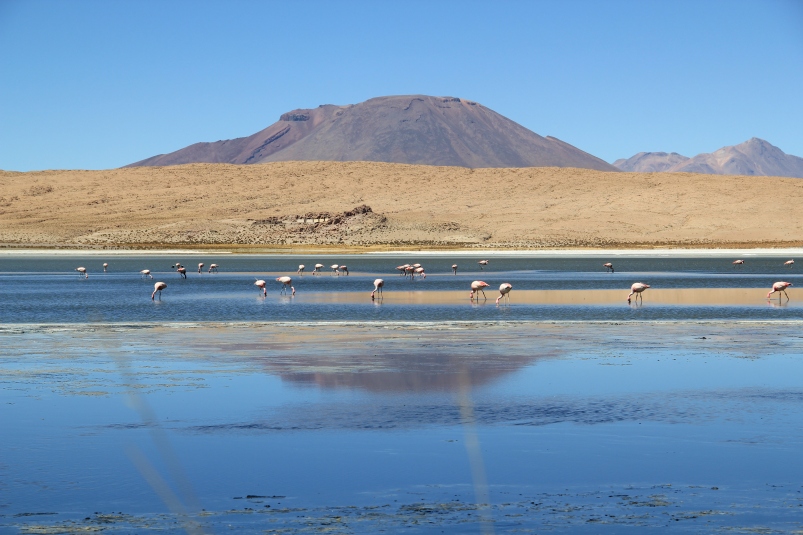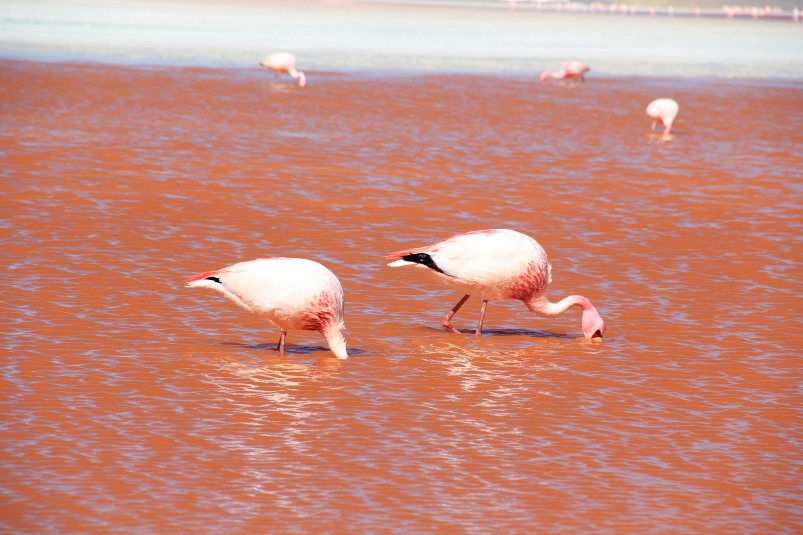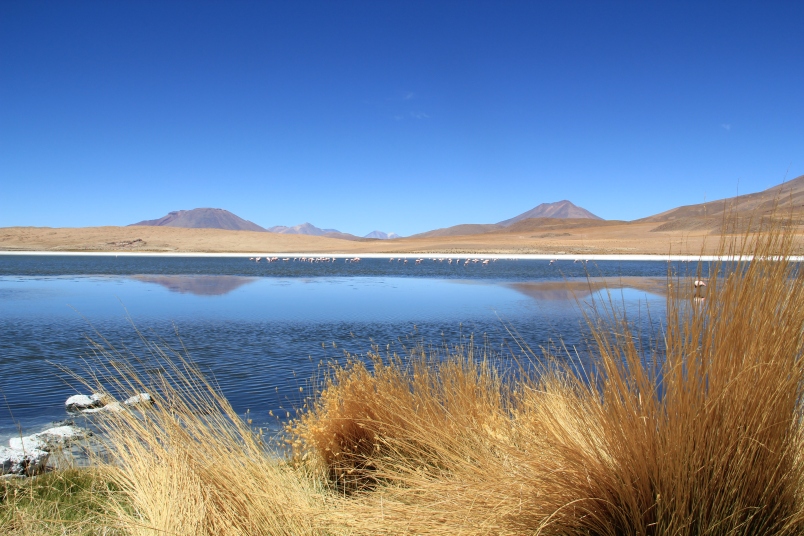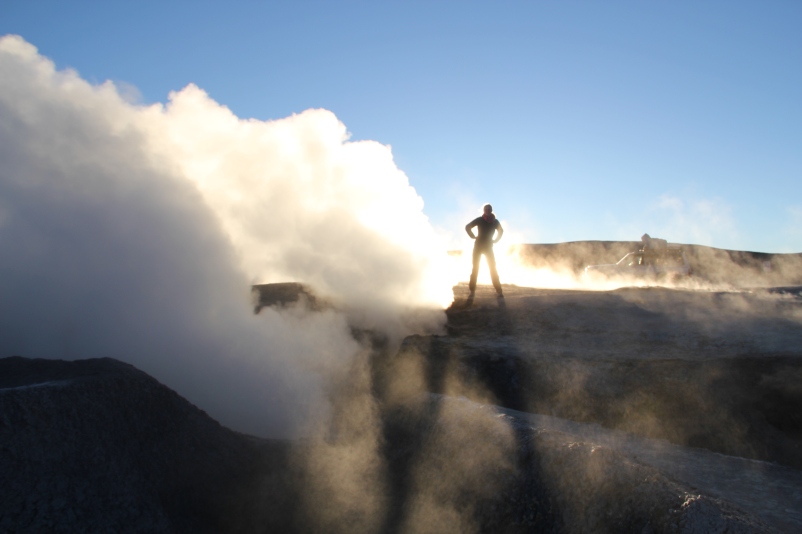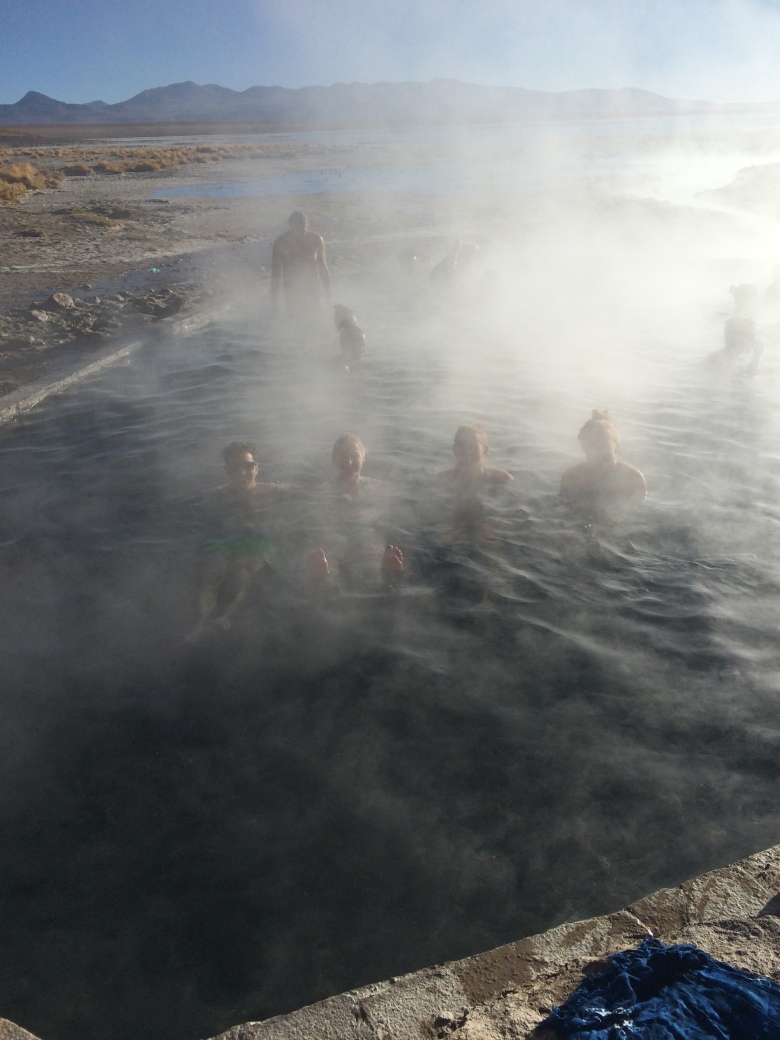camino de la muerte – WMDR (the world’s most dangerous road) – 3000m downhill biking
I heard about it last year when travelling through Peru and i was thinking never over my dead body would i do this. On top the guys were wearing these impressive T-Shirts confirming they had done the death road. After speaking with my hiking guide from earlier in Bolivia who himself was a guide for the death road i got more comfortable and decided to book it.
After having breakfast in a pub at 06:30h in the morning, they took us with a bus up to La Cumbre at 4700m. There we were handed out the jackets, pants, helmets (they even helped us to mount our gopros), gloves, face masks and then the bikes. The bikes were in perfect condition with hydraulic breaks each individually fitted as you like rear left or right as you wished.
Before going down we made a little Pachamama ceremony by pooring a bit of alcohol on the road, on the tire and obviously taking a sip ourselves. He explained us where to ride: on the left side = the side next to the edge and not to the mountain. This comes from the time when this road was indeed the most dangerous road in the world due to its narrowness (at times just approx 3m). This doesn’t seem to bad at first sight but bearing in mind that big trucks were crossing it was! So by driving down on the left, the driver could always watch if the wheel is still on the road and not yet over the cliff. Needless to say that many accidents occured at the time. However since 2007 the new road is in place and now the road is almost only used by bikers, hence a lot less dangerous. So one of the most dangerous subjects is your camera… and other bikers and our guide told us to simply forget even the thought about fiddling around with the camera/phone while biking. Because the road is narrow, you drive on the ‘wrong side’ and it is not plastered but dirt/gravel with some quite big rocks now and then – aye aye we stayed focused.
So as we set off i was pretty nervous and my stomach was not fine (though this could have been from all the Lama meet and potatoes and Coca Quina from the days before) but after the first few km i gradually gained confidence and moved ahead in the group. After a few stops i was heading to the front group as the rest was just really too slow – so it was me and the boys rattling down behind our guide.
Luckily while biking you actually don’t realise how deep the drops are (up to 600m) – i only realised when looking at the videos! There were some tricky curves and narrow sections but the guide always explained section by section so if you didn’t overestimate your speed it was kind of fine. Except when you got out of the ideal lane and ended in loose gravel and forgot that one shouldn’t break. I know the biking experts have a laugh now – but i normally don’t bike…… so a couple of sweaty moments but that was it.
In fact one girl did fall and her bike went over the cliff – but the guide tied a rope to our bus and lowered himself down to the bike (assume it was not too deep, because our guide said he has only 100m rope with him. Because if one would fall deeper there is no more rush to recover him).
Ah yes after the 3000m downhill biking we also couldn’t resist to go on the zip line ‘the flying fox’ and this time i did it superman style… flying through the valley at a speed or 90 km/h was an amazing feeling!
it was a great day and i am now also proudly wearing my ‘i biked the death road’ T-shirt! Normal Lama – Crazy Lama – Call me Lama – Super Lama!!! Can only reccomend this to anybody who happens to be in La Paz 🙂

